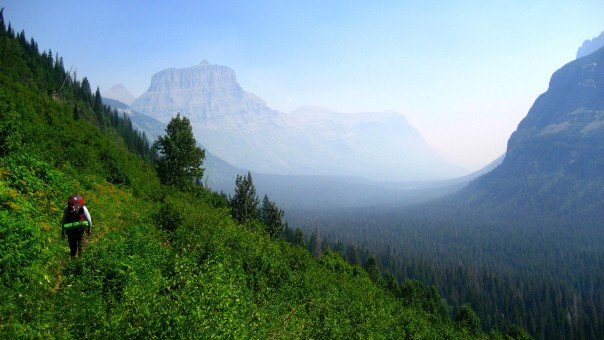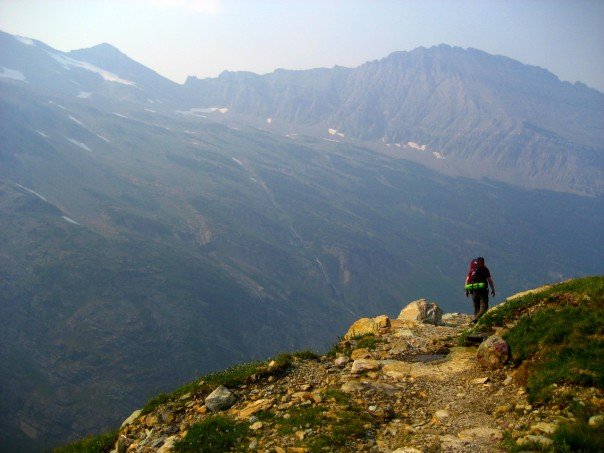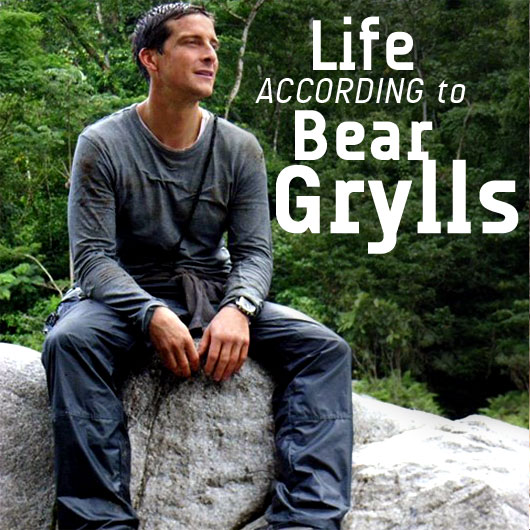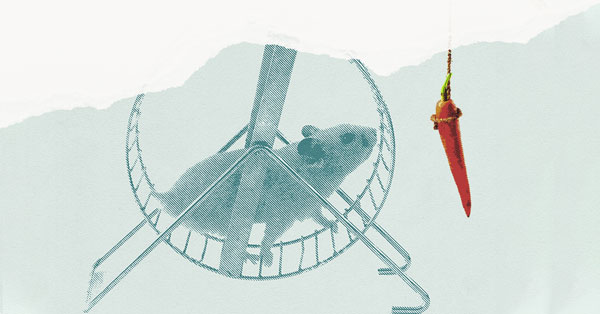Life According to Bear Grylls
Your guide to becoming a well-rounded adventurer.
By Stillman Brown
He's eaten maggots, worms, snakes, and goat testicles and traveled hundreds of miles of remote backcountry on foot. In one memorable moment, after hours on the trail during a trek in California's Sierra Nevada mountains, he fashions an Indian throwing stick with his knife, practices for an hour, and then stalks and kills a rabbit for dinner. The muffled tunk of the stick striking the rabbit is audible on camera, and you can't help but feel unambiguous admiration – It's a remarkable feat of dexterity and outdoor know-how.
Welcome to the World of Bear Grylls.
In the last two years, Man vs. Wild and it's enthusiastic, bug-guzzling host have become a hit in America, attracting urban couch-dwellers and outdoor enthusiasts alike with natural vistas, daring stunts, and common-sense survival advice. He's inspired a cultish internet following that debates the finer points of his knife choice in each episode and plenty of Youtube sendups, but for many he's an inspiration to get outside and make fires, climb big rocks, and perhaps even do some naked pushups.
A big part of Bear Grylls' appeal are his credentials as a badass. At 19 Grylls joined the British Special Forces (SAS) and according to his official bio, served as a sabre soldier, “trained in unarmed combat, desert and winter warfare, combat survival, medics, parachuting, signals, evasive driving, climbing and explosives.” In 1996, Grylls broke his back in three places during a parachuting accident and a mere eighteen months later he summited Everest, briefly becoming the youngest Briton to have done so. He wrote about his harrowing adventure in the gripping (and poorly written) memoir The Kid Who Climbed Everest.
Since then, Grylls has performed stunts for charity, like having a three-course meal suspended from a balloon at 25,000 feet, and circumnavigating England on a jet ski. Most recently, he flew around Everest in a paraglider. His impressive records, along with his energetic style – part self-improvement guru, part excited child – made him a natural for TV.
Grylls has not escaped criticism, however, and in the summer of 2007 a scandal flared when The Times of London revealed that many of the show's stunts are carefully choreographed and vetted by local survival experts. Furthermore, instead of a strict policy of no contact with the camera crew (as Grylls claimed in the show's intro), he may have stayed in a hotel during a shoot. The blogosphere took up the brouhaha and a wikipedia page has since exposed some of the show's dramatic editing tricks (find a good summary here).
Many fans (this writer included) were disappointed but not shocked. As one blogger said, “after all, I'm watching it for entertainment purposes, not for learning how to survive in the wild. If I wanted that, I would grow a beard, move to Montana, and befriend a grizzly bear named Ted.” In a real survival situation, it would be suicidal to try some of the stunts Bear Grylls pulls off (Ice bath? No thanks.), but that's why we are watching him. He's an inspiration not to be followed too literally.
There is a lot to learn watching Man vs. Wild, from the basic (hang your food at night and camp upwind of your cooking fire to avoid a midnight encounter with a grizzly) to the profound (In survival situations, simply visualizing your family or loved ones can give you the burst of willpower you need to survive).
 |
Photo by Stillman Brown |
Here are five lessons, Bear Grylls style, that are key to surviving in your environment, wherever you are:
1. Be in Shape
As a member of the British Special Forces, Bear Grylls had to endure the rigorous training designed to make SAS soldiers some of the most fit, mentally tough, and savvy soldiers in the world. In one of the last phases of the SAS selection process, the candidate is given old, unserviceable gear, turned loose in rough terrain, and ordered to evade hunting parties (usually soldiers from other regiments) on foot for several days in order to learn evasion and guerilla warfare tactics. It's no wonder he makes three days of foot travel in the backcountry look so easy.
Grylls' website gives a brief outline of his training regime on his website, saying, “Bear trains 5 or 6 days a week with a mix of different disciplines. This includes alternating cross country runs, circuit training and yoga. He also does Ninjitsu, gymnastics and acrobatics, and of course his climbing, skydiving and paragliding.” While it's not necessary to be Bear Grylls-fit to enjoy the wilderness, it does act like an insurance policy against injury and discomfort. It can also save your life.
Primer can get you started on a fitness plan, whether you want to safely enjoy day hikes or go peak-bagging in the Sierra Nevadas.
2. Make Informed Decisions
An essential part of survival in the wilderness is decision-making. As Grylls is fond of saying, when you stop making decisions, you die. Survival literature is littered with examples of people who beat back despair by keeping busy with specific tasks – building a shelter or a signal fire – and lived because they maintained a sense of control in chaotic circumstances.
This lesson applies perfectly to life in general. When you relinquish your power to make choices, virtually any situation becomes a nightmare of insurmountable challenges. The same tools that can save your life in the backcountry are transferable to weekly meetings at work: research local conditions, assess risk, formulate a plan of action, and put the full weight of your willpower behind it.
A good starting point for outdoor survival info is the SAS Survival Handbook, but nothing beats one-on-one instruction. Go camping with a buddy who knows his way around the woods or find a local survivalist school. Confidence in the backcountry, as in the boardroom, comes from a series of informed decisions.
3. The Wild is Your Playground

Your local state park is the perfect place to start. State parks may not have much in the way of amenities, but that's ok, because fancy lodges and flushing toilets are for sissies anyway. The important thing is to get out in the woods and comfortable with your surroundings. Start by picking up a pair of quality hiking boots or trail shoes (Grylls wears Merrell Chameleons, a good day hiker), a compass, and a day pack for carrying water and sandwiches. For expert advice, REI has a good introduction to gear and planning a successful hike.
A weekend hiking trip is an excellent classroom for learning basic orienteering, building dexterity on the trail, and paying attention to weather changes. And you'd probably be surprised at how many outdoor opportunities are in your own backyard – There is even an active bouldering community in New York's Central Park!
 |
Photo by Stillman Brown |
4. Get Religion (Or Something Like It)
Though he doesn't mention it much on Man vs. Wild, Bear Grylls is a devout Christian and his faith is a big part of his coping strategy when under stress. I'm not privileging one denomination over another, or suggesting that you need to pray or light incense at the alter of some twelve-armed god. Very much the opposite: Direct contact with the outdoors often leads to a spiritual or religious feeling that can give your adventure a rich dimension beyond physical exertion, scenery, and counting miles. As a friend of mine remarked, “What was Jesus doing in the wilderness for 40 days? Hanging out?” More likely, he strapped on his sandals and went trekking; he understood the spiritual value of traveling miles in the outdoors.
In a survival situation, faith can be a life-saver. Imagine yourself stuck midway up a mountainside in a freak, unseasonable storm. You've become separated from your buddies and don't have much food except a Powerbar and some water. You start to panic and can't seem read your compass correctly – in short, you're truly alone. Relying on faith, some understanding of God, or a comforting spiritual practice can give you the presence of mind to find shelter and wait out the squall instead of wandering until hypothermia sets in. In this way, religion can be profoundly practical.
5. Find Your Sources of Support
The trite phrase that only ‘real men know how to cry' turns out to be true. No man is an island and men who don't think they need help with anything risk meltdown or, worse, pulling a Hemingway (hint: the shotgun always wins.) Many of the finest moments of Man vs. Wild come when Bear grabs the camera by himself and admits to wanting a bath, missing his family, and being sick of the jungle; Suddenly he isn't a TV personality, but a regular guy doing extraordinarily difficult things that cause him to want comfort, support, and guidance
Whether you're interviewing for a new job, in the middle of a grueling workout, or actually stranded in the wilderness, finding your sources of support are important. It can be a partner, girlfriend, or even the old standbys: mom and dad. Tell them about the challenges you face and let them help you plot a course to success. It's not only acceptable, but smart to know when to rely on your friends
A final word: My own love affair with the first season of Man vs. Wild culminated in a four-day, 35 mile backcountry trip in the mountains of Montana's breathtaking Glacier National Park, where I got a taste of the kind of beating Bear Grylls takes to make the show. I had all the creature comforts of home in my backpack (stove, tent, sleeping bag, food & even a portable chair), and the heat, altitude changes, and thin air were punishing. I often wished I had Bear Grylls' outdoor know-how and could travel with less gear – he's the embodiment of “light & fast” backpacking!
I learned, painful mile after painful mile, that simply being in shape or knowing your gear isn't enough. The truly well-rounded adventurer draws on a sound physical, emotional, intellectual, and spiritual bedrock for strength and competence in the outdoors.















